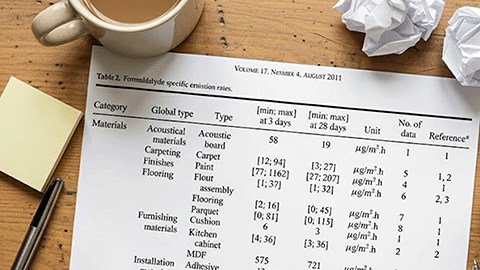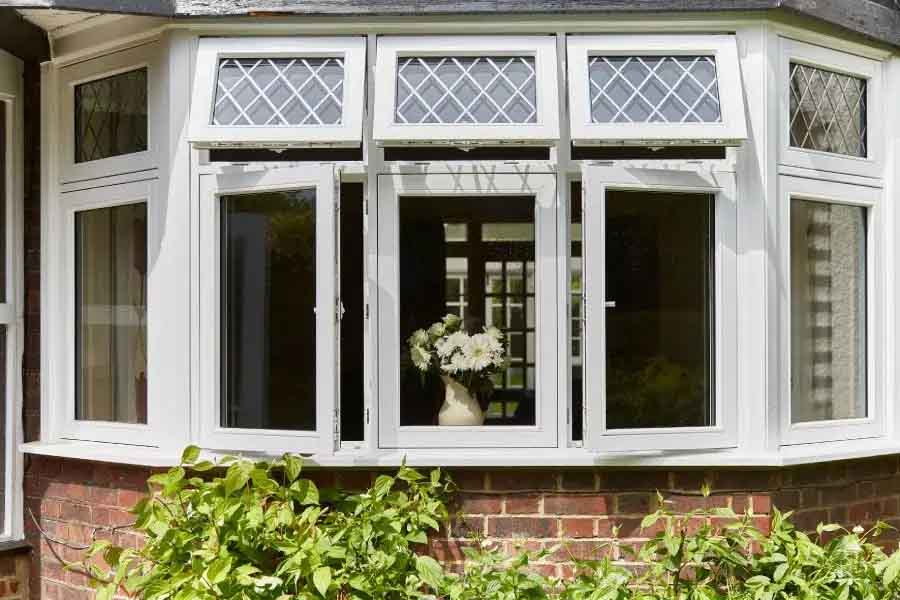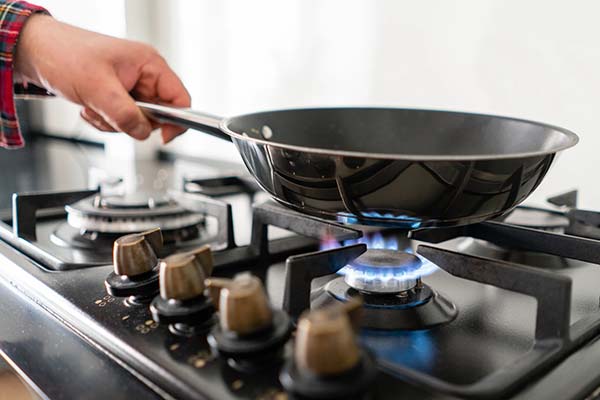A Guide to BS 40102 and IEQ (Updated 2024)
This is a live article that will be updated as and when new BS 40102 information is released. Check back here or sign up to the mailing list for the latest news.
Update 21/02/2024
The new BS40102-1 standard is awaiting sign-off from the BSI, this approval process is expected to be completed in May with an official launch in June.
Immediately after the launch, work will begin in earnest on BS 40102-2 which will cover health and wellbeing in residential buildings.
Update 04/05/2023
BS 40102-1:2023 – Health and well-being and indoor environmental quality in buildings. Health and well-being in non domestic buildings. Code of practice was finalised on 29 April 2023.
What is BS40102?
The British Standards Institute’s BS 40102 is a new standard for that covers the evaluation of a building’s health and wellbeing and indoor environmental quality (IEQ), and includes a new best-practice approach to thermal comfort, indoor air quality and overheating in buildings.
Onto the new exposure limits, in the tables below. They are based on DEFRA Daily Air Quality Index, WHO Air Quality Guidelines 2021, Approved Document F, BREEAM and WELL Guidelines and British Standard BS EN 16798-1.
5.2 Particulate Matter
| PM 2.5 | ||
| Level | Description | 24 hr average (μg/m3) |
| 0 |
Very High
|
≥ 32 |
| 1 | High | 16 – <32 |
| 2 | Acceptable | 10 – <16 |
| 3 | Low | 5 – <10 |
|
4
|
Very Low
|
<5
|
| PM 10 | ||
| Level | Description | 24 hr average (μg/m3) |
| 0 |
Very High
|
≥ 68 |
| 1 | High | 46 – <68 |
| 2 | Acceptable | 30 – <46 |
| 3 | Low | 10 – <30 |
|
4
|
Very Low
|
<10
|
5.3 Carbon Monoxide
| Level | Description | ppm (mg/m3) |
||||
| 15 min avg | 30 min avg | 1hr avg | 8hr avg | 24hr avg | ||
| 0 | Very High | >87.3 (>100) | >52.4 (>60) |
>30.6 (>35) | >8.7 (>10) | >3.5 (>4) |
| 2 | Acceptable | 52.4–87.3 (60–100) |
30.6–52.4 (35–60) |
8.7–30.6 (10–35) |
3.5–8.7 (4–10) |
3.5 (4) |
| 4 | Very Low | <52.4 (<60) |
<30.6 (<35) |
<8.7 (<10) |
<3.5 (<4) |
<3.5 (<4) |
5.4 TVOCs
| Level | Description | ppb (μg/m3 - 8hr avg) |
| 0 | Very High | ≥250 (≥1000) |
| 1 | High | 125 – <250 (500 – <1000) |
| 2 | Acceptable | 75 – <125 (300 – <500) |
| 3 | Low | 25 – <75 (100 – <300) |
| 4 | Very Low | <25 (<100) |
5.5 Nitrogen Dioxide
| Level | Description | ppm (μg/m3 - 1hr avg) |
| 0 | Very High | ≥213 (≥401) |
| 1 | High | 107 – <213 (201 – <401) |
| 2 | Acceptable | 72 – <107 (135 – <201) |
| 3 | Low | 36 – <72 (68 – <135) |
| 4 | Very Low | <36 (<68) |
5.6 Ozone
| Level | Description | ppm (μg/m3 - 8hr avg) |
| 0 | Very High | ≥49.4 (≥97) |
| 1 | High | 31 – <49.4 (61 – <97) |
| 2 | Acceptable | 20.4 – <31 (40 – <61) |
| 3 | Low | 10.2 – <20.4 (20 – <40) |
| 4 | Very Low | <10.2 (<20) |
5.7 Carbon Dioxide
| Level | Description | ppm |
| 0 | Very High | ≥1800 |
| 1 | High | 1000 – <1800 |
| 2 | Acceptable | 800 – <1000 |
| 3 | Low | 550 – <800 |
| 4 | Very Low | <550 |
BS 40102 is in two parts
Part 1: Health and Wellbeing in Buildings
Part 2: Thermal Comfort, Indoor Air Quality and Overheating
Part 1, or BS 40102-1
- gives recommendations for the measuring, monitoring and reporting of the well-being and IEQ performance of an occupied building and the associated building services.
- provides an evaluation and rating system, the aim of which is to enhance IEQ, to create healthier buildings and improve the well-being of building occupants; including but not limited to staff, visitors, tenants and customers.
The output of the rating system is an “IEQ performance score” – based on air quality, light quality, thermal comfort and soundscape quality – that can be used for benchmarking and target setting.
We cover Indoor Environment Quality (IEQ) later on in this article.
Part 2 will expand on Part 1, providing technical benchmarks for improving thermal comfort and indoor air quality for occupants’ health and wellbeing.
This includes air temperature and movement, relative humidity and the prevention of overheating. Concentrations of carbon dioxide (CO2), carbon monoxide (CO), nitrogen dioxide (NO2), volatile organic compounds (VOCs), particulates, microbes and moulds.
Part 2 will also advise on the management of risks associated with poor design and occupant behaviour, and a route to net zero through a whole-building approach that does not impinge on occupant safety.
Why is it happening?
While BS 40102 applies to all forms of non-domestic building – existing or new, it is intended to help retrofitters remedy some unintended consequences that have occurred over the years.
The current page argues that previous regulations and commercial pressures have meant designers, builders and managers have prioritised energy efficiency at the expense of occupant health and wellbeing. For example, with poor ventilation and lighting.
By improving the building’s IEQ performance, the new standard intends to help building owners and managers improve occupancy rates with better occupant comfort and performance, and reduce operational costs through increased energy efficiency.
What does PAS 3003 have to do with it?
BS 40102 evolved from PAS 3003, a publicly available specification compiled by EFT Consult and many partners, including ARM Environments’ very own Adam Taylor and James Price.
When it was realised that the British Standards Institute was also working on a standard covering similar ground, both committees decided to merge them together under BS 40102.
Do we need BS 40102?
To people in the building and facilities management sector, this standard might sound similar to the WELL Standard, which is widely credited as a premier certification for building performance in relation to occupant health and wellbeing.
So do we need another one?
One argument is that the British Standard will be much more accessible, allowing all kinds of non-domestic buildings to gain a respected certification that has been formulated in collaboration with many experts and organisations in the IEQ world.
But we think that it needs to bring something new to the table to be worthwhile. We analyse all new guidance as they come out.
Note that sister standard BS 40101:2022 also covers IEQ and health and wellbeing, but it focuses on how to evaluate building performance. Including what to measure, when to measure it, as well as testing methods and the expertise and technology required.
And for those in the residential space, standard BS 40104 – assessment of dwellings for retrofit – is also coming out in 2023.
What is IEQ?
Indoor environmental quality (IEQ) is a measure of all the conditions inside a building that impact the health and wellbeing of its occupants.
Indoor air quality (IAQ) measures the levels of pollutants like VOCs, noxious gases, dust, cigarette smoke and pathogens in the air.
IAQ is what people breathe inside a building.
IEQ is a much bigger beast. It expands on IAQ to include not just air quality, but also light, sound, and thermal comfort.
IEQ is what people breathe, see, hear and feel inside a building.
Why is IEQ important?
In Europe, we spend 90% of our time indoors, so it’s important that our indoor environment is conducive rather than reductive to our lives.
Studies have shown the impact of light, sound, air and thermal comfort have on office workers. From the 66% drop in productivity for those distracted by noise, to the extra 46 minutes of sleep per night for those working in an appropriately lit office.
It’s also been observed that, of all the IEQ factors, temperature has the highest impact on office workers’ stress, while a sense of control over their IEQ has been shown to lower it.
Since the 1990s, green building and sustainability have been the primary concern for designers and constructors, and building managers. However, in the last decade, a focus on occupant health and wellbeing (and therefore productivity and revenue) have become more prominent, meaning IEQ has become more and more important as a consideration. Today, the ideal workplaces are considered those that incorporate both sustainable building practices and IEQ strategies.
When was BS 40102 released?
- The proposal stage for BS 40102 ended on 5 September 2021.
- The drafting stage for Part 1 started on 7 April 2022.
- BS 40102-1:2023 – Health and well-being and indoor environmental quality in buildings. Health and well-being in non domestic buildings. Code of practice was launched on 29 April 2023. BSI members can buy the BS 40102-1:2023 document from the BSI website.
Update 20/03/2023
The consultation phase is complete, the final edit is now being produced. The new BS 40102-1:2023 standard is due to be released in late spring 2023.
Update 30/01/2023
The eagerly anticipated BS 40102-1 health and well-being and indoor environmental quality in buildings, Part 1: Health and well-being in buildings has reached the comment resolution stage.
The next stage is approval status, just prior to publication.
Update May 2022: Draft Released
The draft BS40102-1 document is now available and ready for comments. Here are some important exposure limits in "Section 5: Air". Please note that these figures are only draft and may change when the full standard is released.
If you are registered with the British Standards Institute, you can make comments until 30 May 2022.
Sign up to our mailing list to stay updated on BS 40102, IAQ and IEQ news
/arm_588410681.jpg)





